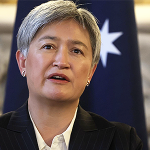President Trump has imposed tariffs on almost all countries, with tariffs ranging from 10 per cent up to 46 per cent in the case of Vietnam. These have rocked financial markets.
But there is a slight problem: the US started with an illogical premise, then proceeded illogically to an illogical conclusion, which it implemented illogically.
The short of it is that the US falsely claimed to be the victim of tariffs and trade barriers merely because it had a trade deficit with that country. The US then looked for a way to reduce that trade deficit. It used a fancy-looking formula but it botched the calculation by using incorrect numbers. It also failed to account for GDP differences in developing markets, outliers, and erroneously used numbers from one point in time (as opposed to a time series). The US had then communicated the tariffs in a chaotic manner.
With this in mind, let’s look at the shemozzle in detail.
How are tariffs defined?
Let’s start with what the tariffs are. President Trump has billed the tariffs as being ‘reciprocal tariffs’. The tariff is allegedly commensurate with the trade barriers that the other country imposes on US goods. Those trade barriers could involve direct tariffs. They could also involve non-tariff barriers, such as currency manipulation and regulatory barriers. The US imposed a minimum tariff of 10 per cent. However, the tariff escalates if the country imposes more alleged barriers.
The tariff calculation is where things come a little unstuck. The US looked to impose a tariff rate on countries that would set the trade deficit it has with that country to zero. The trade deficit is the difference between how much the US exports to that country and how much it imports.
President Trump alleged that if there is a trade deficit then it must reflect trade barriers. Therefore, he has asserted that the US trade deficit as a percentage of the US imports from that country is the ‘tariff rate’. Or, phrased differently, President Trump defined trade barriers as the trade deficit divided by imports. From this, he then asserted that if the US were to impose a tariff of that level, it would be ‘reciprocal’ in nature.
The obvious problem with this approach is that a trade deficit is not merely due to tariffs and trade barriers. A trade deficit can arise because the US requires raw materials, which the country supplies. If the US then uses those materials to make substandard products, it will run a trade deficit.
Imagine a scenario where a country has ample uranium but no nuclear power plants. That country will be a net exporter of uranium. Imagine another scenario where a country has ample coal, gas, and bauxite. It will then be able to produce aluminium. It could then be a net exporter of it.
The situation gets more absurd when tariffs exist. Ironically. Imagine our aforementioned aluminium-producing country. Now suppose its trading partner imposes tariffs to protect its auto industry. What will be the result? It will be a protected, under-performing, and low-quality industry. This has been well documented. Tariffs can protect mediocre managers and companies from outside competition, enabling them to produce substandard goods for domestic consumption that have no reasonable chance of succeeding in an international market.
A bad idea applied badly
The situation gets worse when we consider how the US implemented this poor idea. To see this, we must consider the formula they used. It involves Greek letters to make it look more fancy.
This is a problem. It turns out those simplifying assumptions are just plain wrong. The American Enterprise Institute highlights this in good detail. Specifically, for example, the elasticity of import prices with respect to tariffs is not 0.25. That is the elasticity of retail prices with respect to tariffs. Rather, the empirical literature suggests that actual elasticity should be closer to one. This fundamental mistake. It inflates the alleged reciprocal tariff four-fold The Trump administration should have known better because the paper they cite for using the formula specifically notes this issue.
The net result: a bad idea applied badly. Or, to quote Chris Richardson, ‘If you’re going to be incompetent, then please be competently incompetent.’
What about the penguins and the polar bears?
A curious quirk of the calculation is how it applies to myriad small countries. For example, the Heard and McDonald Islands were hit with a 10 per cent tariff despite having no human inhabitants. Similarly, Svalbard and Jan Mayen suffered a 10 per cent tariff despite Jan Meyen being a rotating military base of around 18 people and Svalbard having a population of 3,000 and [perhaps] being best known for polar bears.
The tariffs on small islands are comical in a sense. How can penguins pay a tariff? However, the Trump Administration would argue that it is to deter countries from rerouting their exports.
The bigger issue is more fundamental: the tariffs are skewed and this applies in myriad different ways. The reciprocal tariff figure is as at one point in time. The US has not looked at average trade, or even a time-weighted average trade level. Rather, it is at one point in time. This means that for small countries, a large transaction can skew trade in absurd ones, as appears to have been the case with Saint Pierre and Miquelon, which had one $3.4 million export to the US in July 2024 (which might in fact stem from a repair job).
The reciprocal tariffs also create absurd results for developing countries. For example, Vietnam exports $123.5 billion to the US and imports only $13 billion. This creates a large trade deficit. The US alleged that Vietnam imposed a 90.4 per cent tariff on its goods. This is false. After all, is it realistic to expect people in a developing country to afford expensive US goods? Furthermore, Vietnam’s GDP is $465.8 billion. Thus, to erase the trade deficit, US exports would need to rise to 26.5 per cent of Vietnam’s entire GDP. This is clearly impossible.
When we put all this together the result is chaos.








